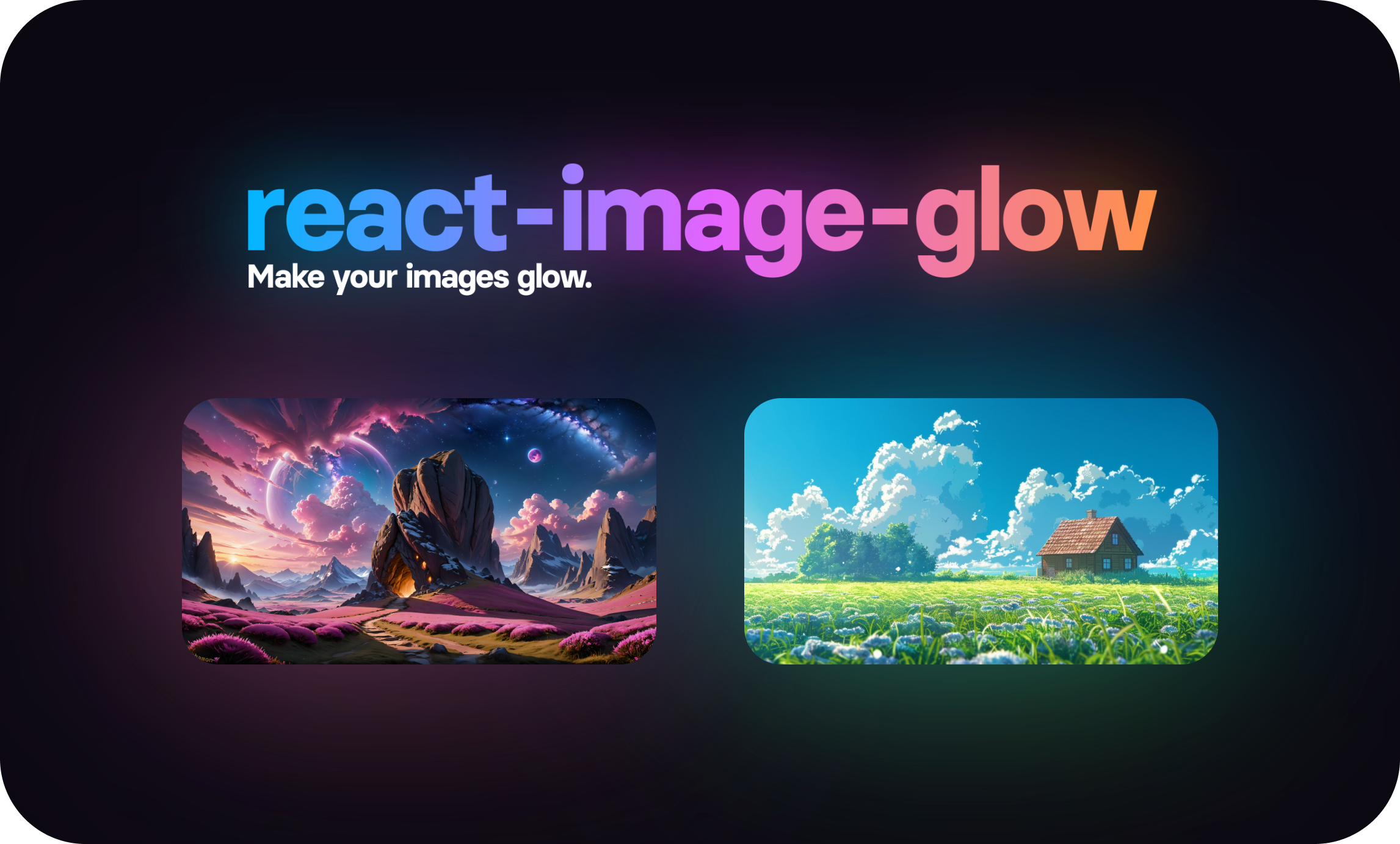react-image-glow is a React component that adds a glowing background effect to images, similar to YouTube's ambient mode. It’s lightweight and customizable, letting you control the glow radius, saturation, and opacity for a stunning visual effect.
Install the package using npm or yarn:
npm install react-image-glowor
yarn add react-image-glowWrap any <img>, <motion.img>, or <Image> element with the <ImageGlow> component to apply a glowing effect. You can customize the intensity of the glow with optional props.
import ImageGlow from 'react-image-glow';
<ImageGlow>
<img src="https://picsum.photos/300" alt="Placeholder" />
</ImageGlow>import ImageGlow from 'react-image-glow';
<ImageGlow
radius={30}
saturation={1.5}
opacity={0.8}
className="example"
>
<img
src="https://picsum.photos/300"
alt="Placeholder"
className="max-w-[300px]"
/>
</ImageGlow>| Prop | Type | Default | Description |
|---|---|---|---|
children |
ReactNode |
N/A | A single <img>, <motion.img>, or <Image> element as its child. |
radius |
number |
50 |
The radius of the blur effect applied to the background. |
saturation |
number |
2 |
Saturation level for the glowing background. A higher value increases the intensity of colors. |
opacity |
number |
1 |
The opacity of the glowing background (0 = fully transparent, 1 = fully opaque). |
className |
string |
'' |
An optional class name to apply to the <img> element. Useful for additional styling. |
- ImageGlow expects a single
<img>,<motion.img>, or<Image>element as its child. If no child element is present, an error will be logged to the console.
The component uses inline styles for layout, ensuring the glowing effect aligns perfectly with the image. You can still pass custom styles to the <img> element or apply classes via the className prop for further customization.
The ImageGlow component creates two layers:
- Base Image Layer: The provided
<img>,<motion.img>, or<Image>element is displayed with any custom styles or classes. - Glow Layer: A blurred, saturated, and optionally semi-transparent version of the image is placed behind the original image to create a glow effect.
This is achieved using CSS properties like filter: blur and saturate to manipulate the image’s background.
